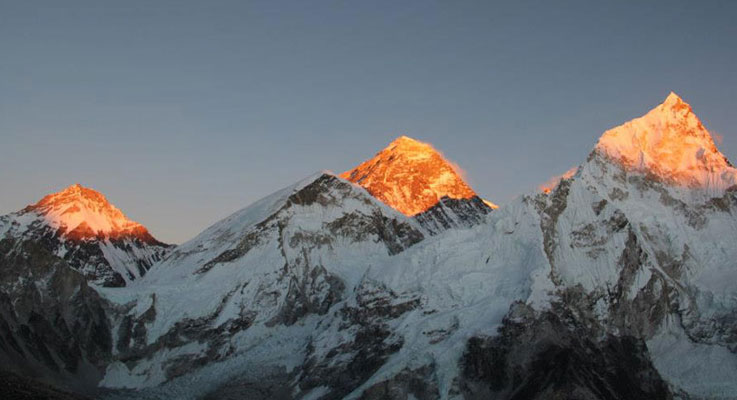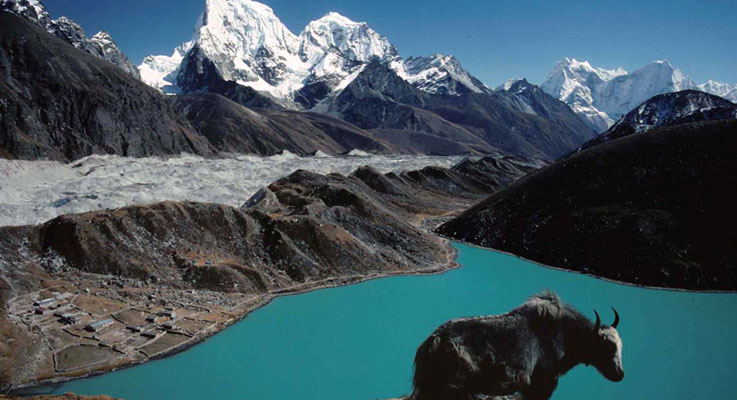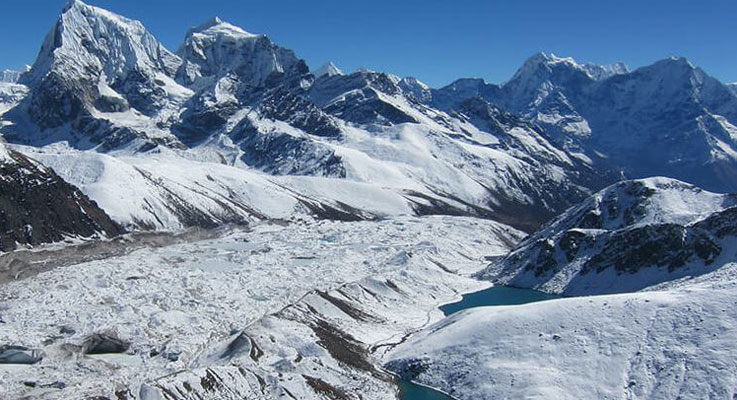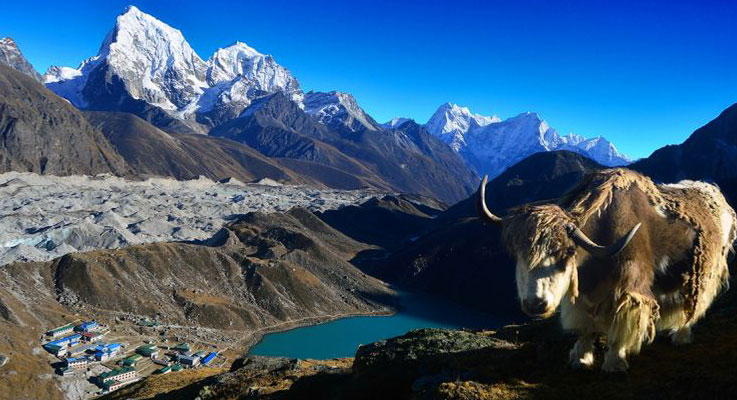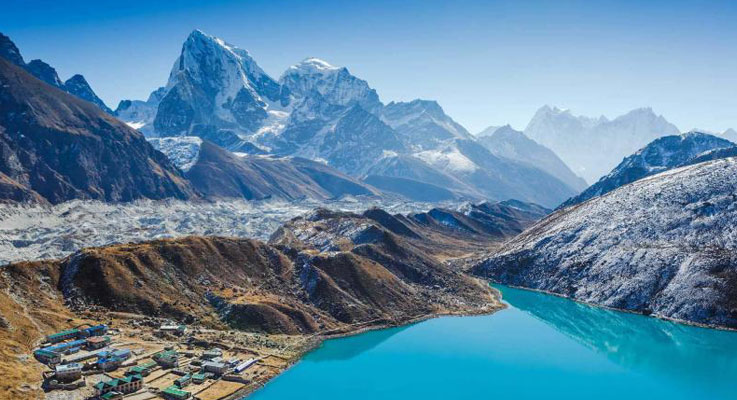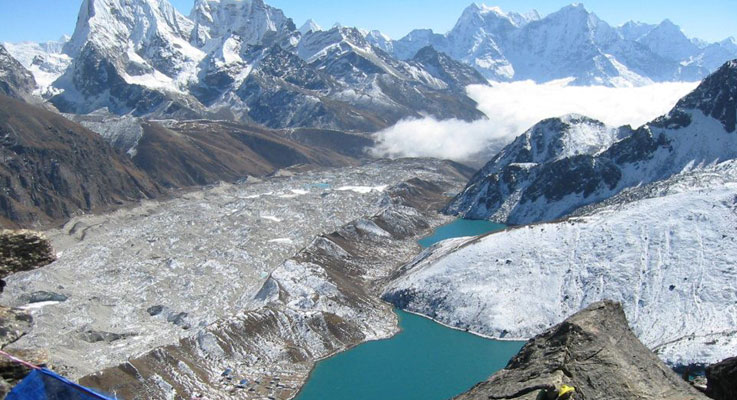-
Day 1
Arrival in Kathmandu (1,345m/4,413 ft)
Upon arriving at at Tribhuwan International Airport in Kathmandu, you will be received by our airport representatives who will warmly greet you and transfer to the hotel on a private tourist vehicle. We provide 3-star accommodation in the city and we arrange for a trip briefing with dinner in the evening.
-
Day 2
Visit old town of Kathmandu
A professional guide and vehicle are provided for a day of sightseeing in and around Kathmandu city. We visit some of the UNESCO World Heritage Sites in the city along with other interesting cultural monuments that dot the valley. These include Boudhanath Stupa (the largest Buddhist shrines in the world), Pashupatinath (the holiest Hindu temple in the world), Durbar Squares (Palaces and fortresses of medieval Kings), along with other popular cultural attractions. We get to observe the lifestyle of Nepalese people, holy sadhus and monks, fascinating history as well as awe-inspiring architecture.
-
Day 3
Fly from Kathmandu to Lukla (2,800m/9,186 ft). Trek to Phakding (2,610m/8,563 ft)
Early in the morning, you will be transferred to the airport in Kathmandu for a scenic 30-minute flight to Lukla. The airport guide will brief you and introduce our porters before we begin our trek towards Phakding (2,610m). There will be some time to explore the village while our Sherpa crew sorts and loads trekking equipment and baggage. The trek starts with a descent to DudhKosi River, from where the wider trail leads us to the village of Ghat (2,550m), and then to Phakding on an easy-paced walk.
-
Day 4
Trek from Phakding to Namche Bazar (3,440m/11,286 ft)
Walking along the shores of DudhKosi, we get to cross the serene river many times on exhilarating suspension bridges decorated with prayer flags. A little further, we enter Sagarmatha National Park from where the trail climbs steeply with picturesque sights. After trekking for a few hours, we reach Namche Bazaar, known as the Gateway of Everest.
-
Day 5
Namche Bazaar acclimatization day
In order to acclimatize to the altitude gained and thinner air, we spend a day in Namche Bazaar. There are several quality restaurants, hotels, lodges, shops, money exchange services, internet cafes and bakeries at this town, also the largest in the Everest region. We pay a visit to the museum nearby known for its traditional artefacts that showcase the Sherpa culture. We also hike to Syangboche Airport from where we can see rewarding vistas of stunning sunrise and sunset over the Himalayan panorama.
-
Day 6
Trek from Namche Bazar to PhorsteThanga (3,680m/12,073 ft)
The trail climbs steeply out of valley through rhododendron forest, juniper and large conifers start to appear as the elevation increases making the trekking very pristine in spring. The trail passes through Yak Kharkas and summer settlements. The views of Khumbi La and Tawache are magnificent throughout the day.
-
Day 7
Trek from Phortse Thanga to Machherma (4,470m/14,665 ft)
We climb a ridge for an excellent view both down the valley to Kengtega and up towards Cho Oyu and descend to a river and again climbs steep to the terminal moraine of the Ngozumpz glacier. We will reach Machherma by early noon.
-
Day 8
Trek from Machherma to Gokyo (4,790m/15,715 ft)
The trek today takes us at one of our main destinations, Gokyo (4,790m). We will make this camp our base for 2 nights as we will have couple of sightseeing and hiking trips around Gokyo.
-
Day 9
Trek from Gokyo to GokyoRi (5,438m/17,841 ft), and back to Gokyo (4,790m/15,715 ft)
Early in the morning we have a steep climb up to the top of GokyoRi at an elevation of 5,483m. There are ample rewards for those who attempt this trip - you get stunning views of the super Gokyo valley, the massive Ngozumpa glacier and an incredible panoramic view of the whole Khumbu Himalayas, including the giants Everest, Lhotse, Nuptse, Makalu, Cho-Oyu and Gychung Kang. This day we have for acclimatization and after noon back to the camp.
-
Day 10
Trek from Gokyo to Thangna (4,500m/14,764 ft)
Trek to the foot of Cho La pass for our overnight stay at a guesthouse.
-
Day 11
Trek from Thangna to Dzongla (4,710m/15,453 ft), via Cho La Pass (5,300m/17,388 ft)
We start before sunrise at 4 or 5am to reach the pass by 9 - 10am to dodge bad weather conditions of the noontime. We cross over at an altitude of 5,300m where we could be exposed to strong winds if we crossing too late. We start to climb steeply that is regularly used and easy to follow. However, the problem may arise due to the altitude and snow. It often causes terrible problems to cross the pass if it is covered by snow. As you reach the top, you are rewarded by the magnificent views, then we descend to the Dzongla at noon.
-
Day 12
Trek from Dzongla to Lobuche (4,910m/16,109 ft)
A rather easier and shorter trekking route will take us to Lobuche after 4 hours of trekking.
-
Day 13
Trek from Lobuche to EBC (5,365m/17,602 ft) and then to Gorakshep (5,180m/16,995 ft)
This is difficult day walk along the Khumbu Glacier and up to Everest Base Camp at 5,365m the closest you can get to Mt. Everest without mountaineering equipment. There will likely be a team there about to attempt the summit. The view of the Khumbu Icefall from Base Camp is spectacular. We return back to Gorakshep for the night.
-
Day 14
Trek from Gorakshep to Dingboche (4,350m/14,272 ft) via Kalapathar (5,555m/18,225 ft)
This will be one of the most difficult yet rewarding days of the trek. Most of morning in this day is spent climbing Mt. Kala Patthar, a small peak (by the Himalayan standards) at 5,555m. The ascent is demanding but the climber gets the most magnificent mountain panorama: Everest, the highest point on the planet at 29,028ft (8,848m), towers directly ahead and on all sides loom the other giants, Nuptse, Pumori, Chagatse, Lhotse and countless others. We make a quick descent to GorakShep, a tiny hamlet at 5,180m then trek down to Periche.
-
Day 15
Trek from Dingboche to Namche Bazaar (3,440m/11,286 ft)
From Periche we take a slightly different route down to Orsho then to Pangboche village. Here is the oldest monastery in the region which contains what is said to be the scalp and bones of a Yeti, or abominable snowman. Leaving mountains behind us our descent takes us through the Tengboche Monastery at elevation of 3,860m before continuing back to Namche Bazaar at 3,441m. We arrive back to Namche Bazaar in the afternoon.
-
Day 15
Trek from Namche Bazaar to Lukla (2,800m/9,186 ft)
Finally we return to Lukla where we started our trek, which might seem like a lifetime ago. We'll spend some time enjoying and reflecting on the trek as a group and the personal achievement of all those who took part. We also have some spare time to explore the town some more.
-
Day 17
Fly from Lukla to Kathmandu (1,345m/4,413 ft)
Today we fly back to Kathmandu from Lukla, and during your flight you can enjoy some last-minute glimpses of the mountains. Upon arrival in Kathmandu, you can rest, relax and go sightseeing throughout the day.
-
Day 18
Leisure day in Kathmandu
This is a leisure and free day in Kathmandu for exploration. You are free to go souvenir shopping, spa and more exploration of the city, or extend your trip to include bungee jumping, rafting, mountain biking, Everest mountain flight and other adventurous activities. In the evening, we will have a farewell dinner at Mul Chowk Restaurant’s cozy and elegant dining ambience.
-
Day 19
Departure from Nepal
The trip concludes today. You will be dropped at Kathmandu's Tribhuwan International Airport by our airport representative for your flight departure from Nepal.

